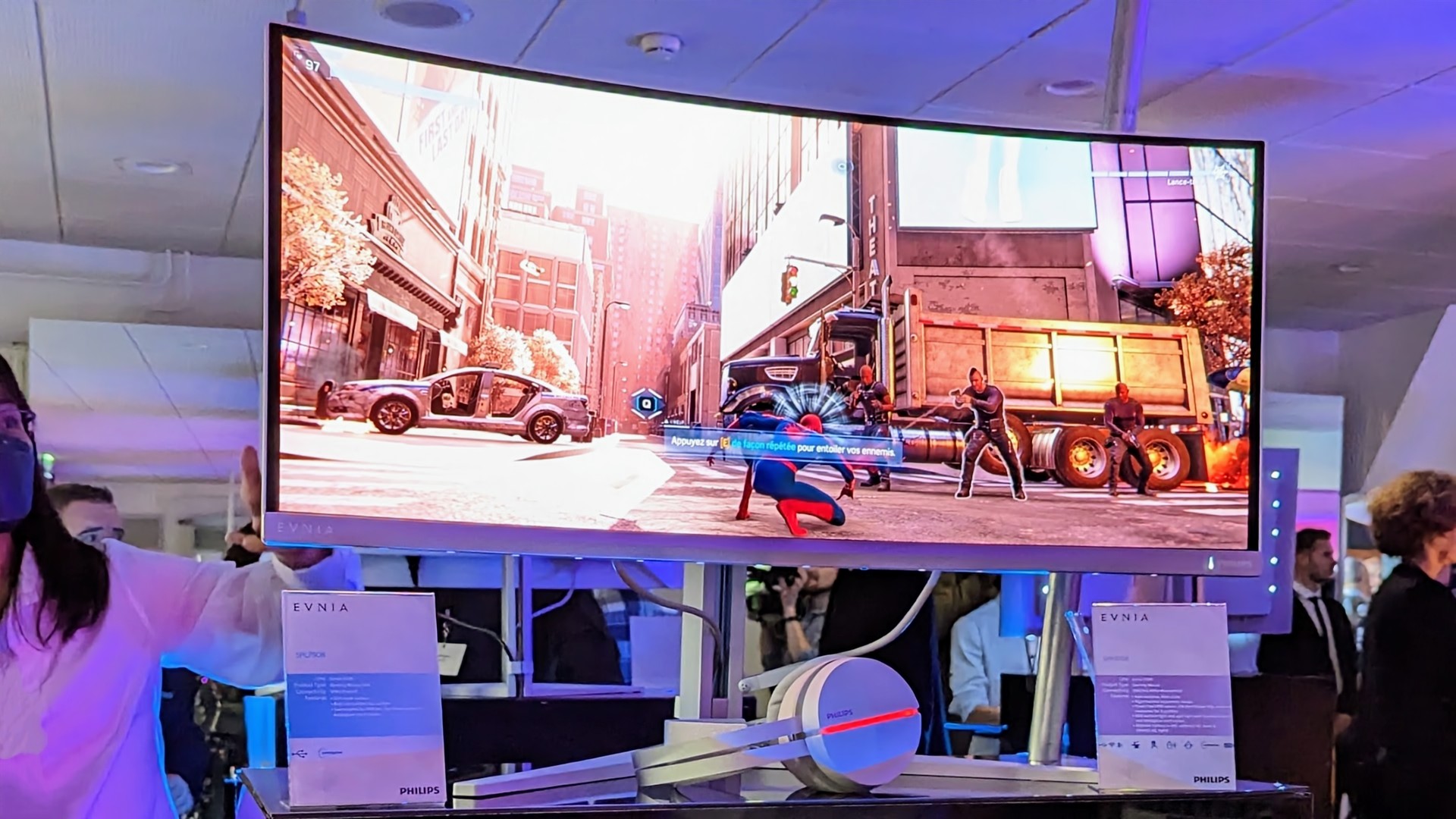With the launch of its new Evnia brand, Philips hopes to turn RGB LEDs in gaming monitors into a really useful feature. By incorporating Philips Ambiglow technology into its future displays, the company hopes to bolster its already promising and beautiful lineup of displays.
The Philips Evnia 34M2C7600MV may have a downright awful name, as even the best gaming monitors unfortunately do, but after spending time with the pre-production model, I’m cautiously optimistic about its release. It’s got the specs and style to make a splash in the marketplace, assuming it’s priced right, of course.
In terms of specifications, the Philips Evnia 34M2C7600V is a 34-inch curved ultrawide gaming monitor with a native resolution of 3440×1440 and a frequency of 165Hz. No official support for AMD FreeSync or Nvidia G-Sync is known yet, but at least Adaptive Sync is supported.
What I liked about this screen was its mini-LED backlight with 1152 dimming zones, which when combined with a VA panel should deliver a compelling HDR experience. I have to get it myself to give a final verdict, but its DisplayHDR 1400 certification is promising.
Philips Ambiglow acts as the icing on the cake and helps the Philips Evnia 34M2C7600V stand out from the competition. Even in a showroom, I was amazed at how bright the LEDs got, and how their ability to dynamically change colors based on on-screen images increased the perceived area of the screen.
The Philips Evnia 34M2C7600V will be available from December for €2,069 (about $2,069 / £1,814.28). They will be joined next year by other gaming monitors of various shapes, sizes, and prices, in January 2023.
These include the 42-inch Philips Evnia 42M2N8900 OLED display (€1,959), the 34-inch ultra-wide QD-OLED, and the 27-inch Philips Envia 27M2C5500W VA panel (€579). However, the Philips Evnia 34M2C8600 ($1,849) might be something to consider, as it’s the main competitor to the Alienware AW3423DW, as each has a QD-OLED screen.
Source : PC Gamesn
